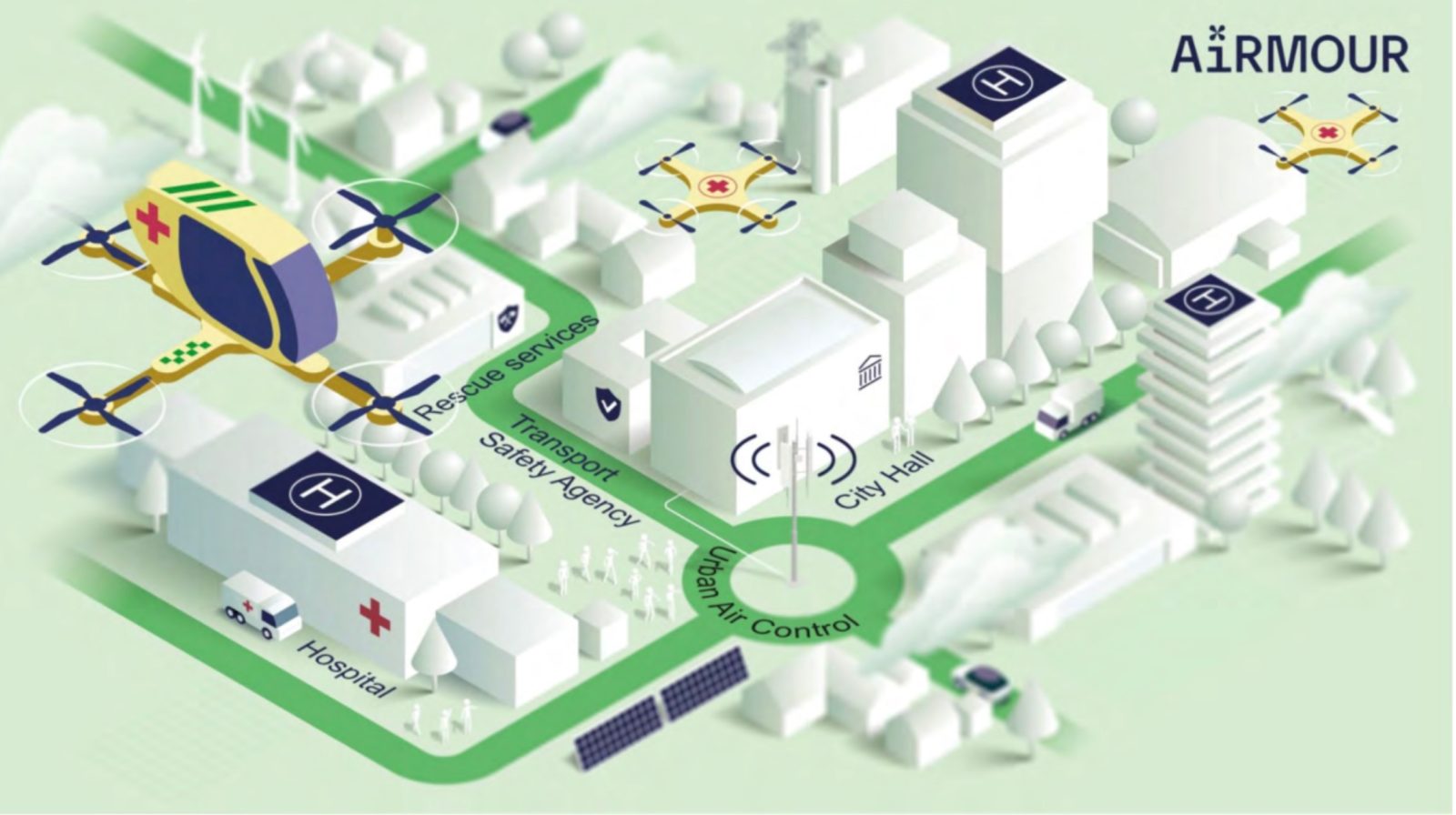
The European Union organization researching, testing, and validating urban air mobility (UAM) services, AiRMOUR, has issued a guide to assist businesses, communities, and member nations to facilitate the integration of next generation aviation tech into daily activities.
The product of the three-year Horizon 2020 research and innovation project, AiRMOUR’s new UAM Integration Guidebook aims to help stakeholders on all sides of emerging air tech transportation and services with preparations for the nearing launch of those activities. The guide covers all the range of factors involved, from passenger-bearing electric vertical takeoff and landing planes like air taxis to delivery and public service drones; from infrastructure planning to public concerns and acceptance.
AiRMOUR says its guidebook is designed to help city and regional decision makers, UAM craft operators and service providers, and even interested members of the public identify and understand the decisive elements in introducing successful advanced air mobility operations into their transportation grids. Top among those are knowing whether, where, and how investment is most likely to produce the widest benefits.
The organization has built its guide on what it calls four key topics in future deployment:
- Urban design and mobility
- Aviation safety
- Public acceptance
- UAM integration process management
Though clearly intended to provide complete information on topics explored, the composition and conception of AiRMOUR’s UAM Integration Guidebook is also very practical in its manner of laying out an activity that – especially once in the regulatory sphere – can rapidly become formidably complex and wonk-prone. The manual begins each section with an easily digestible “In a Nutshell” summary, and contains hyperlink boxes to take readers to reference bodies for further elucidation when desired.
The instructive booklet draws from AiRMOUR “deliverables” of its research and testing projects, including UAM simulations and trials it has participated in or observed with partner cities across the EU and beyond.
Meanwhile, with AiRMOUR’s wider UAM brief containing a pronounced and prolonged focus on the best uses of new aerial tech in medical and emergency response, its composite experiences plugged into a wholistic aerial vision proved essential in provided officials from partnering cities insights into how approaching advanced air mobility craft can fit together in European skies.
“Without AiRMOUR it would have taken much more time to push the drone topic forward internally,” said Christina Suomi, the head of spatial and strategic urban planning of the City of Helsink. “Inspired by the work and learnings from AiRMOUR, we are now into development of drafting and testing our own aspirations for Helsinki U-Space Digital Twin.”
AiRMOUR’s UAM guide is not the only pedagogical yet practical initiative to help prepare communities for new aviation activity. In the UK, the recently launched AAM4Gov organization is offering advice and even structured courses to assist members of local and regional governments and other stakeholders understand and prepare for nearing UAM services.
Supported by the UK Research and Innova!on Future Flight Challenge, Innovate UK, and the Economic and Social Research Council, AAM4Gov is designed to act as a self-described “AAM Academy for UK City and Local Governments.”
As such, it will not only maintain contacts with actors in all areas of next generation aircraft transportation, but also provide formal courses including: An Introduction to AAM & UAM; Community Benefits of Drones and eVTOLs; AAM Public Consultation – covering methods of engaging with local communities to ensure citizens’ needs are prioritized in any new service launch; AAM Drone Security – critical aspects of drone security and managing drone nuisance; AAM and the Law; and AAM Policy Making – developing drone/AAM policies that attract new investment and business, while reducing costs and environmental footprints.
Much like AiRMOUR’s guidebook, AAM4Gov is intended to provide expert assistance and insight about new aerial activities to officials and communities that up to now may have been slow to recognize their swift arrival as ready-to-deploy services.
“While many councils have been using drones for years to reduce survey and maintenance costs and support first responders – such as fire services, police, and Coast Guard units – in saving lives, new technology developments are about to rapidly increase the number and capability of drones in the skies above us,” explained Philip Butterworth-Hayes, a respected aviation expert and writer who is now also working in the AAM4Gov project. “The first electric air taxis will fly in Europe next year, while drones will soon be delivering defibrillators, medicines and pizzas to households throughout the UK. For councils, this is an opportunity and a challenge.”
FTC: We use income earning auto affiliate links. More.



Comments